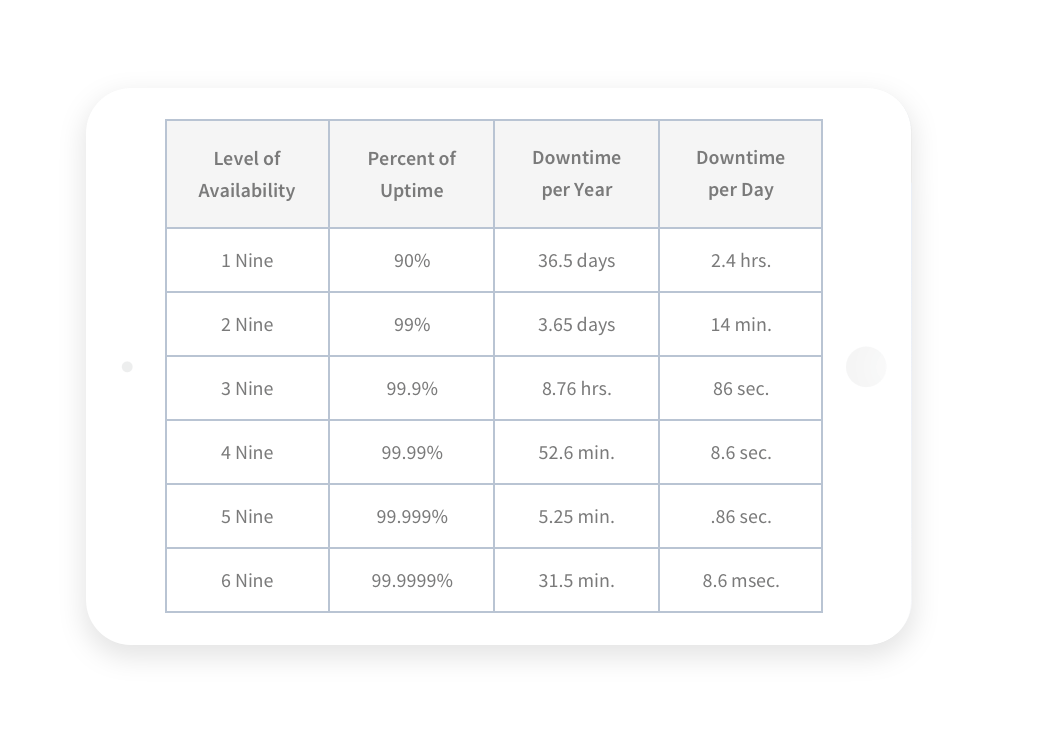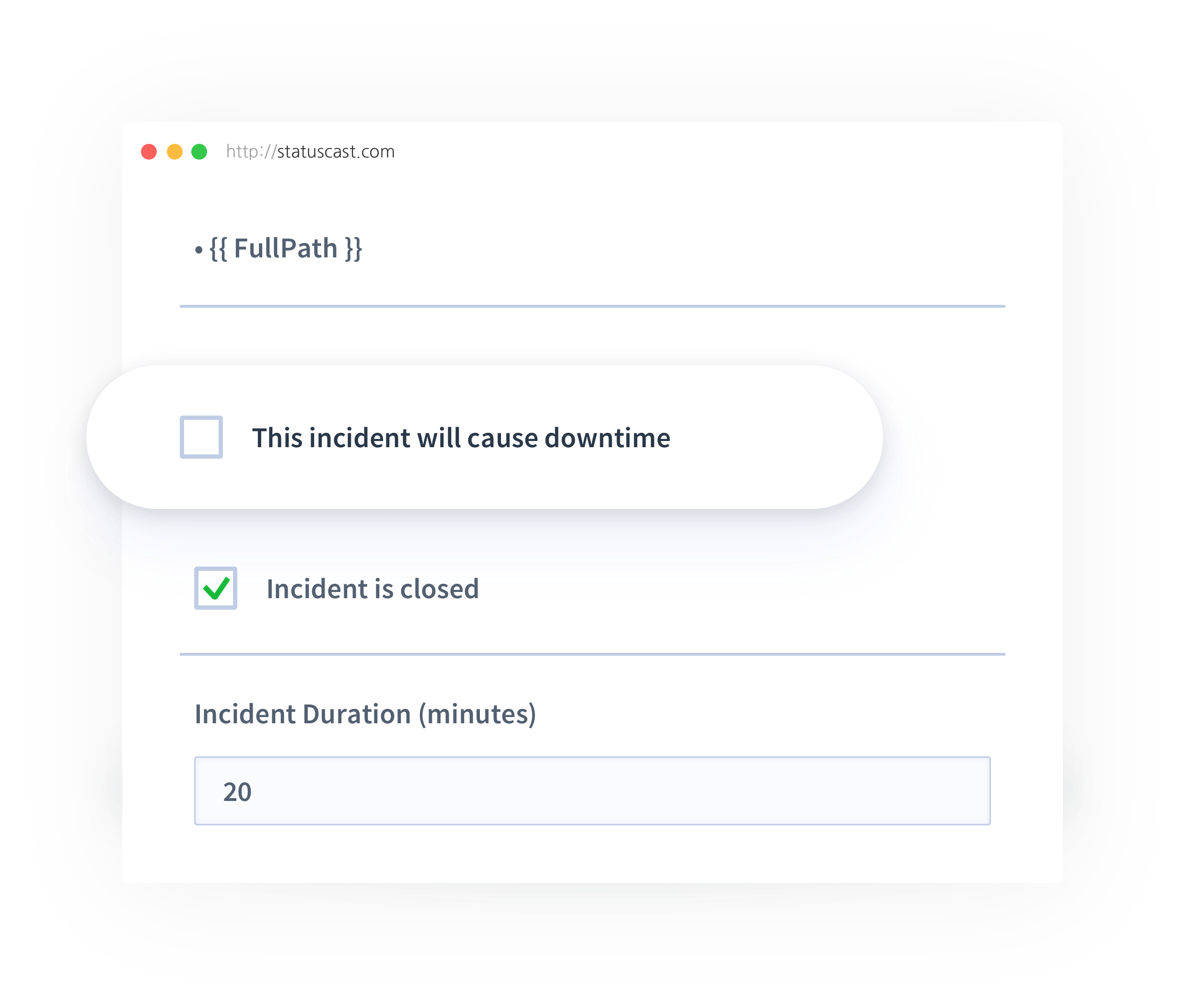Service levels and uptime are probably the most important metrics you can track when it comes to measuring the quality of your infrastructure.

If you sell an application or service, chances are your customers have existing Service Level Agreements (commonly known as ‘SLA’s’) requiring you to measure and meet minimum uptime thresholds on a monthly basis.
Typically uptime (also known as availability) is measured by “Nines”. This measurement is total expected uptime within a given period of time, calculated out to a specific percent.
Here’s a common ‘Table of Nine’ often used when it comes to measuring uptime:

Every incident that you create in StatusCast has the ability to contribute to downtime. Incident administrators have full control of determining which incidents count against your uptime. So even if you flag a set of services or components as ‘unavailable’ during an incident, you can still control whether you want that unavailability to count against the calculated availability.
During an incident StatusCast lets you control not only the ability to mark the incident as contributing to overall downtime, but you can also determine specifically which services and components were affected.

StatusCast allows you to track and measure total uptime for every individual service and component you define within the application. Optionally, you can use our advanced calculation system to ‘bubble’ uptime calculations from child or sub-components up to their parents.
Your StatusCast status page can publish uptime percentages and can even provide a real-time SLA Reporting page that lets your end users view overall and individual component uptime.
Show your end users historical uptime reports for any given period of time with StatusCast’s status pages.